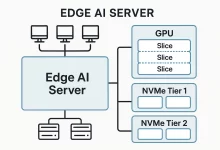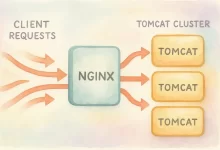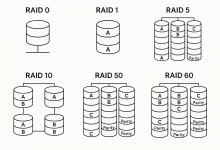I still remember a 2 a.m. phone call from a frantic sysadmin friend—let’s call her Maya. “Someone just locked every exec out of email,
and the DC’s event logs are blowing up!” Been there. Done that. Bought the extra-strength coffee. What the post-mortem revealed later was painfully ordinary: a single phished workstation, a lateral move, and—boom—Domain Admins access. That story isn’t unique; Microsoft’s own telemetry shows a jaw-dropping 98 percent of breached companies never bothered with proper privilege tiering in AD. Yikes.
So, in the spirit of tough love (and some well-timed caffeine), here’s my unapologetically opinionated guide to hardening Active Directory
in 2025—no buzzword bingo, just real-world tactics I use when the pager screams.

1. Slash First, Ask Questions Later: The Least-Privilege Purge
Clean the “Domain Admins” closet. Keep only the built-in Administrator plus a break-glass account hand-cuffed by a password manager.
Kick everyone else to role-specific groups. Sure, folks will grumble. Let them. A little inconvenience now beats ransomware later.
Roll out Role-Based Access Control (RBAC). Instead of everyone getting swiss-army-knife privileges, carve out micro-groups—HelpDesk-Password-Reset, GPO-Editors,
Backup-Operators. You get granularity, auditors get clarity, and attackers get headaches.
Embrace the “two hat” lifestyle. Admins should wield a daily-driver non-privileged account for email and browsing, and a separate “jump” account for admin work.
It’s clunky. It’s also table-stakes if you’re serious about containment.
2. Passwords Aren’t Dead—They’re Just Longer and Lazy-Rotated
Listen, I love passkeys and smartcards as much as the next security nerd, but passwords still rule internal AD. The trick?
Length over fancy symbols. Shoot for 14-plus characters, sprinkle in MFA where possible, call it a day.
Better yet, let Microsoft LAPS (or its shiny cross-platform successor) auto-rotate local admin passwords every few hours.
That one change alone kneecaps pass-the-hash strolls across your estate.
3. Tier 0, Tier 1, Tier 2: Your New Religion
I used to scoff at diagrams with colored concentric circles—until I saw a red-team vault from Tier 2 workstation straight into a Tier 0 DC in under
ten minutes. AD’s tiered administration model forces you to separate authentication paths:
- Tier 0 (core): Forest & domain controllers, PKI, ADFS. Access via hardened jump hosts only.
- Tier 1 (servers): File, print, SQL, application servers.
- Tier 2 (users): Workstations, BYOD chaos, coffee-stained laptops.
Cross-tier logons? Forbidden. Because once Tier 0 creds land on a help-desk PC, your blast radius just went nuclear.
4. Fortify the Castle Walls: Domain Controller Hardening
Physical isolation. No joke—I’ve seen DCs wedged under a marketing intern’s desk. Move them to a locked rack, kill SMBv1, disable
NetBIOS, strip anything that smells consumer-grade.
Read-Only DCs (RODCs). Branch office demanding a domain cache? Ship an RODC. It stores only select password hashes, so when
that dusty branch box walks out the door (it happens), Tier 0 trust stays secure.
Need guidance on locking down the underlying hypervisor? My deep dive on VMware ESXi 8.0 deployment lays out host-hardening tips you can steal today.
5. Know Thy Logs—or SIEM Will Shame You
AD churns out a digital paper trail longer than a CVS receipt. Focus on the juicy bits:
- User adds to privileged groups
- GPO edits (especially
sysvoltampering) - Kerberos service-ticket mishaps (a golden-ticket smell test)
Pipe them into your SIEM—Microsoft Defender, Splunk, whatever—and set real alerts, not the default noise cannon.
Bonus: pair that with a host-level firewall. If Linux is your jam, check out the firewalld configuration guide for instantly tighter east-west traffic.
6. Quick-Win Checklist (Tear This Out and Tape It to Your Monitor)
- Audit
Domain Admins. Remove everyone who isn’t named “Administrator.” - Create RBAC groups for each operational role.
- Deploy LAPS or equivalent; enforce 14-character minimum.
- Build Tier 0 jump servers. Ban interactive logons from anything lower.
- Convert remote sites to RODCs; disable cached Tier 0 creds.
- Feed Event IDs 4728, 4732, 4672, 5136 into SIEM with high-urgency alerts.
But Wait—Will Users Riot?
I won’t sugar-coat it: tightening AD hurts feelings. Expect ticket spikes, maybe a few heated hallway chats. My take?
Security that’s invisible is often security that’s ineffective. Communicate early, offer self-service password-resets, and—crucially—track
metrics. When the inevitable “this is slowing us down!” email pops in, show them how compromise-containment time dropped from hours to minutes.
Parting Thoughts: Security Is a Lifestyle, Not a Sprint
Active Directory survived Y2K, the cloud hype cycle, and even HR running payroll scripts as Enterprise Admins. It’s still the beating heart
of identity for thousands of companies. If we treat it like just another checkbox, attackers will keep waltzing through 98 percent of forests with
laughable ease.
So next time you’re tempted to postpone that “AD cleanup” project, reme

 FoxDoo Technology
FoxDoo Technology







